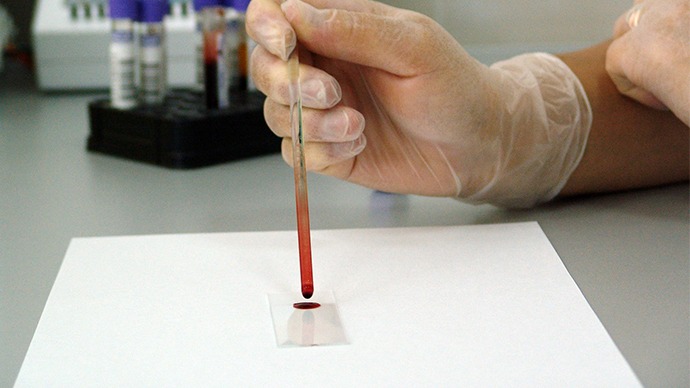Australian scientists are recommending the new blood test, now known as liquid biopsy, for cancer screening. The technique spares patients from the invasive surgical procedure that conventional biopsy methods employ. It also saves time from screening to treatment.
What is a Liquid Biopsy?
A Liquid biopsy refers to a test being done a blood sample, which looks for cancer cells or fragments of DNA shed by tumours circulating in the blood. It is used to detect cancer at any stage, monitor responses to treatment and help explain resistance to therapy.
Liquid biopsies have gone beyond giving a prognosis of overall survival to allowing a full understanding of real time molecular changes in the tumour.
Natasha Stork was diagnosed with stage four metastatic melanoma six weeks after giving birth. She had been suffering from stomach pain that was caused by tumours in her stomach lining, small intestines, hip bone and liver.
To determine the kind of melanoma she had, doctors would have had to carry out an invasive surgical biopsy. Luckily for Natasha she had a liquid biopsy blood test done instead and the results were back in less than six hours.
She was found to have the treatable BRAF mutation and was put on treatment immediately. She is now been declared free of cancer.
Ms Stork had this to say: ”I feel amazing and I am now able to be a full-time mum.”
Liquid Biopsy Research
A study published in the February 19, 2014 issue of Science Translational Medicine showed the use of the non-invasive method to detect and monitor tumour DNA of various cancers. The study aimed at measuring the levels of cell-free circulating DNA (ctDNA) with tumour DNA mutations or structural changes in large populations of blood samples.
The researchers used digital polymerase chain reaction based sequencing techniques and rearrangement analyses to measure ctDNA levels. In 82 percent of the study participants with metastatic cancers, ctDNA was detected. They also noted that the number of patients with detectable ctDNA increased with the tumour stage.
Scientists in cancer research aim at early detection and subsequently put all their effort in promoting detection in the early stage.
In their study, Bettegowda and team detected circulating KRAS-mutant DNA fragments in the blood of patients with KRAS-mutant tumours with high specificity and sensitivity. In a panel of 206 patients with metastatic colorectal cancer, the sensitivity of ctDNA for detection KRAS gene mutations wa 87.2 % and its specificity was 99.2%.
Tumour cells also release RNA into the blood where they are absorbed by platelets. Platelet RNA can be easily isolated and analysed and therefore platelets provide additional non-invasive screening biomarkers.
The exciting benefits related to liquid biopsies are:
- They provide non-invasive, ongoing picture of the patient’s cancer.
- They are used to monitor the effects of cancer treatment.
- They give early indications of possible recurrence of cancer
- They help in determining the possible reasons for resistance to treatment.
Scientists are hopeful that in the future liquid biopsies will also be used to guide cancer treatment decisions and maybe screen for tumours invisible in imaging.







